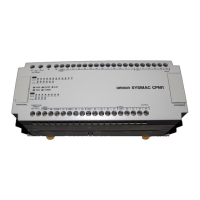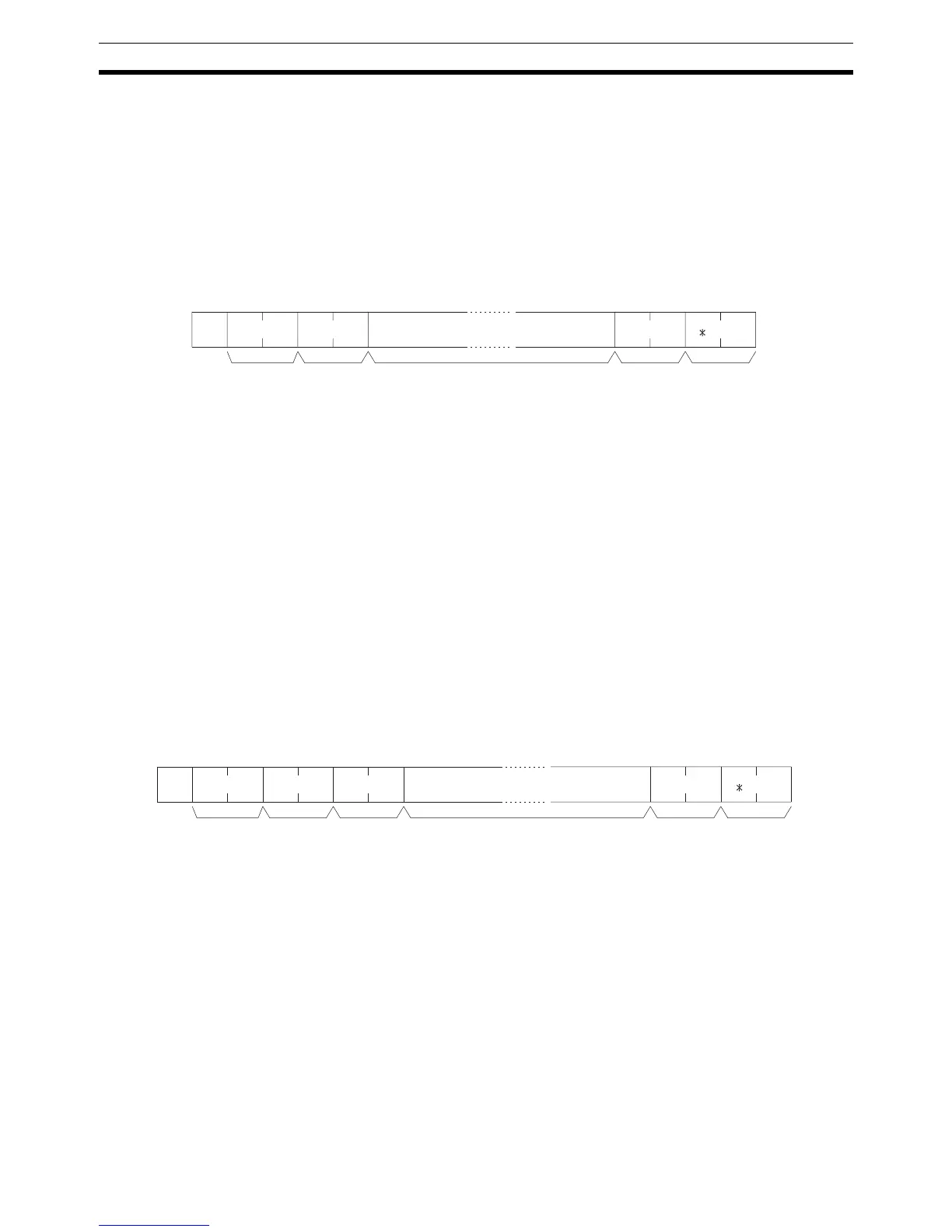362
Command and Response Formats Section 6-2
6-2 Command and Response Formats
This section explains the formats for the commands and responses that are
exchanged in host link communications.
6-2-1 Commands from the Host Computer
When a command is issued from the host computer, the command and
response formats are as shown below.
Command Format When transmitting a command from the host computer, prepare the command
data in the format shown below.
@
An “@” symbol must be placed at the beginning.
Node No.
Identifies the PC communicating with the host computer.
Specify the node number set for the PC in the PC Setup (DM 6648, DM
6653).
Header Code
Set the 2-character command code.
Text
Set the command parameters.
FCS
Set a 2-character Frame Check Sequence code. See page 364.
Terminator
Set two characters, “*” and the carriage return (CHR$(13)) to indicate the end
of the command.
Response Format The response from the PC is returned in the format shown below. Prepare a
program so that the response data can be interpreted and processed.
@, Node No., Header Code
Contents identical to those of the command are returned.
End Code
The completion status of the command (e.g., whether or not an error has
occurred) is returned.
Text
Text is returned only when there is data such as read data.
FCS, Terminator
Refer to the corresponding explanations under “Command Format.”
Long Transmissions The largest block of data that can be transmitted as a single frame is 131
characters. A command or response of 132 characters or more must therefore
be divided into more than one frame before transmission. When a transmis-
x 10
1
@
FCS
x 10
0
↵
Node no. Header
code
Text Terminator
@
x 10
1
x 10
0
x 16
1
x 16
0
FCS
↵
Node no. Header
code
End code Text Terminator

